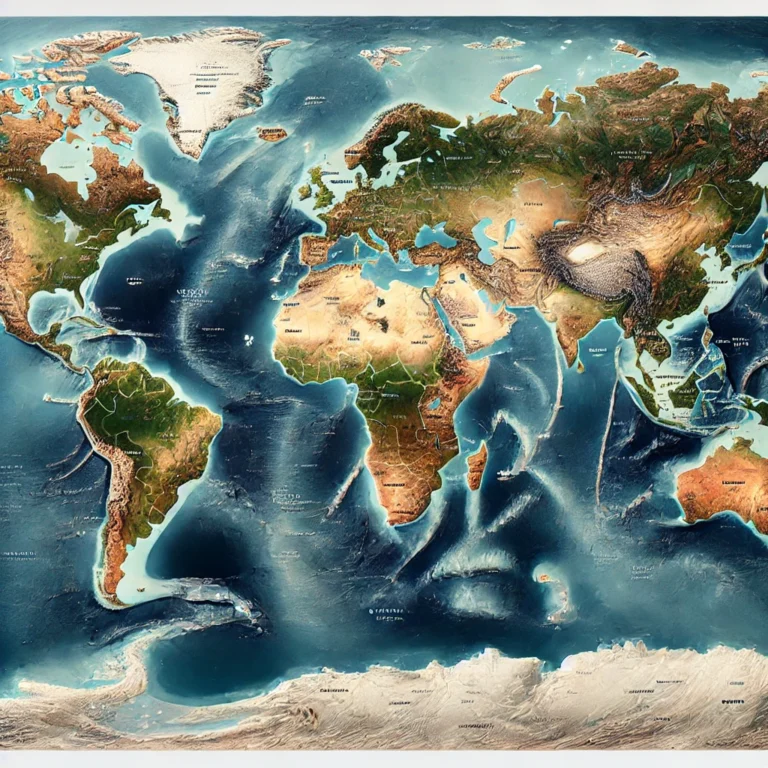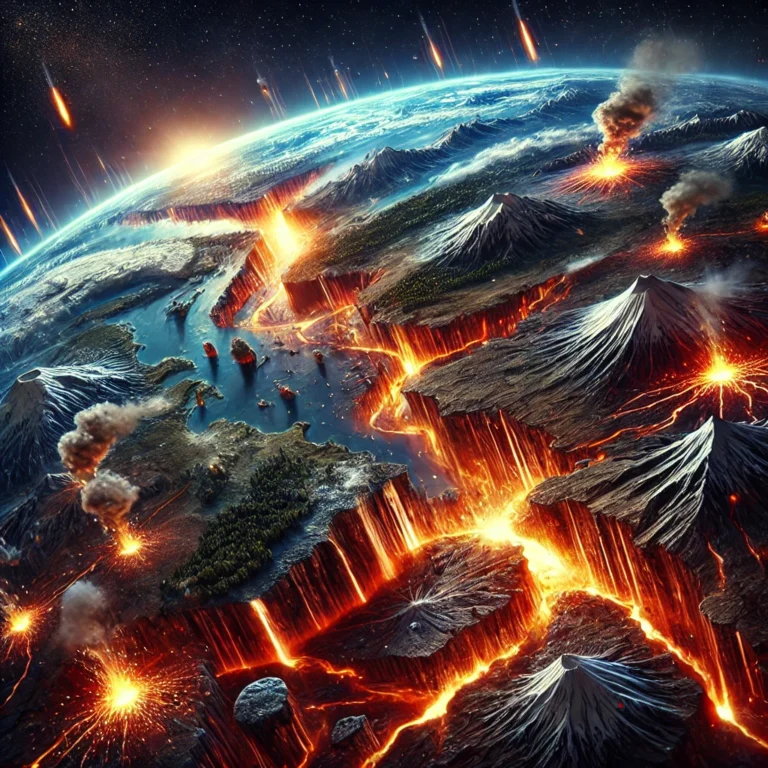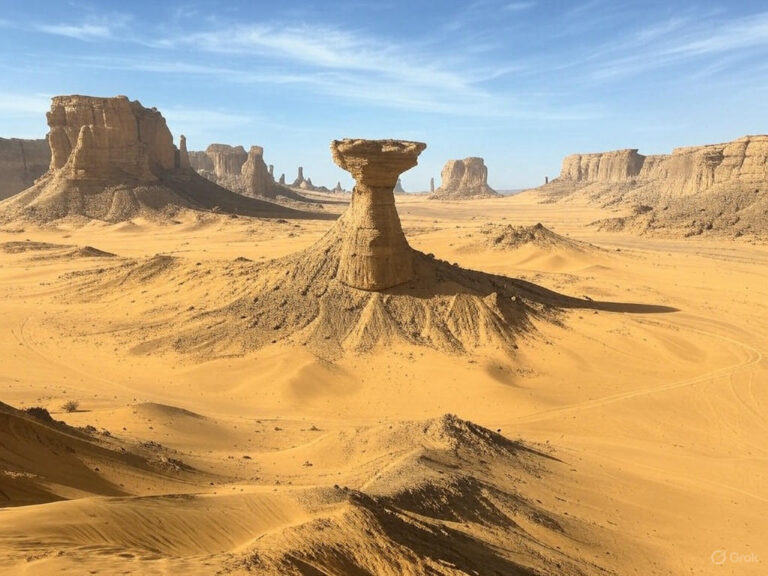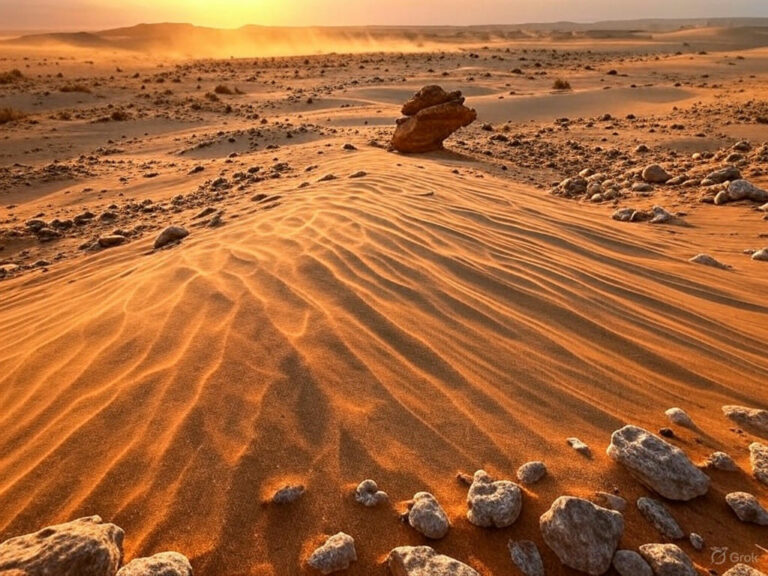Theories of Pediment Formation
We have already studied about pediments in earlier section: A Pediment is a broad, gently sloping rock-cut surface found at the base of a mountain.
But how are these pediments formed? Scientists have debated this question for over a century, leading to multiple theories. Let’s explore them one by one:
1. Lawson’s Recession Theory: The Mountain’s Retreat
Our journey begins with A.C. Lawson’s Recession Theory. Imagine the towering mountain in front of you slowly shrinking backwards rather than breaking down from the top. How does this happen?
- Over time, weathering and erosion weaken the mountain front.
- The rocks break apart due to temperature fluctuations (hot days and cold nights), and wind and water help remove the loose material.
- This process is called backwasting, where the entire mountain front moves backward rather than simply crumbling down.
Now, picture the eroded material being carried away by wind and rare but intense desert rainstorms. Some of it gets deposited at the lower part of the pediment, forming alluvial fans. Over centuries, these fans extend upslope, covering the pediment with sediments.
However, this cover is not permanent. Tectonic movements (diastrophism) or strong winds can expose the rock surface again (a process called exhumation), revealing the pediment once more.
Analogy: Think of a sandcastle at the beach. If you pour water gently, the front wall slowly erodes and moves back rather than collapsing instantly. This is similar to how the mountain front recedes, leaving behind a smooth pediment.
2. Sheet-Flood Theory of McGee: The Power of Desert Storms
Now, let’s fast forward to W.J. McGee’s theory (1897). Imagine standing in a desert when suddenly, dark clouds gather, and a torrential downpour begins. The dry, rocky terrain cannot absorb the water, so a massive sheet of water rushes downslope, carrying rocks, sand, and debris with it.
McGee argued that pediments are shaped by these occasional but powerful floods rather than gradual erosion. Here’s how it works:
- The floodwaters wash away the weathered bedrock, exposing a smooth rock surface—the pediment.
- The eroded material is transported downslope and deposited as bajadas (large coalescing alluvial fans).
However, critics argue that sheet floods alone cannot fully explain the concave shape of pediments. Instead, they believe these floods only play a supporting role in modifying already formed pediments rather than creating them from scratch.
Analogy: Think of how heavy rain on a muddy slope can wash away the top layer of soil, exposing the harder ground beneath. Similarly, sheet floods remove loose debris and expose the bedrock.
3. Lateral Erosion Theory: The Work of Ephemeral Streams
Finally, let’s move to G.K. Gilbert’s and D.W. Johnson’s explanation. Here, the key players are not wind or floods but streams that carve out the landscape over time.
Picture a mountain valley divided into three zones:
- Inner Zone (Degradation Zone): Closest to the mountain, where rivers actively cut down (vertical erosion) through the rock, eroding the landscape.
- Intermediate Zone (Pedimentation Zone): Streams spread out and erode the sides, gradually shaping the pediments.
- Outer Zone (Aggradation Zone): This is where sediments accumulate to form bajadas and alluvial fans.
How does this process work?
- Initially, vertical erosion dominates in the inner zone, cutting deep channels.
- Over time, as streams meander, they also erode laterally, expanding the valley floor and forming pediments.
- Eventually, multiple small streams join together, and their combined erosion creates broad, sloping rock surfaces.
Analogy: Imagine a spoon scraping peanut butter off a slice of bread. If you only press down, you make a deep groove (like vertical erosion). But if you also move the spoon sideways, you create a smoother, wider surface—just like lateral erosion forming pediments.
Conclusion: Which Theory is Correct?
In reality, no single theory can fully explain pediment formation. Different processes likely work together to shape these features over thousands of years. Some regions may be dominated by backwasting (Lawson’s theory), others by sheet floods (McGee’s theory), and still others by stream erosion (Lateral Erosion Theory)






